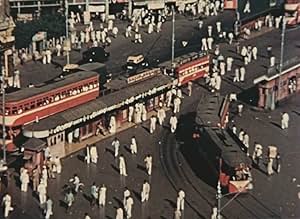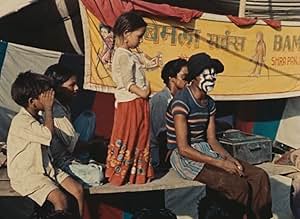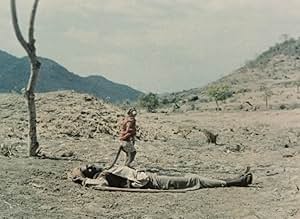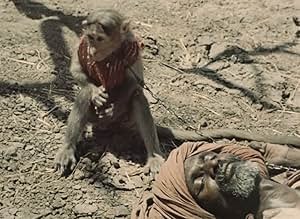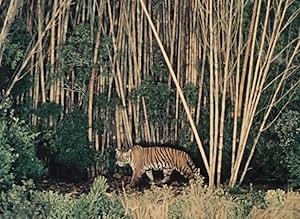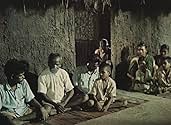Añade un argumento en tu idiomaSeveral stories depicting the landscapes and fauna of India are mixed with documentary footage.Several stories depicting the landscapes and fauna of India are mixed with documentary footage.Several stories depicting the landscapes and fauna of India are mixed with documentary footage.
- Premios
- 2 nominaciones en total
Reseñas destacadas
Not an easy movie, and certainly it is not going to get a "blue sticker" from the pundits of post-colonial thought... but "Born into Brothels"? Ple-ease! A washed-out late night Hollywood-esquire expose' good for Anderson Cooper, maybe. Rossellini spent a year in India shooting a ten-hour documentary, and this little fiction film "India Matri Bhumi". The need for restoration is obvious, but the process of de-spectacularization is in full effect: a full frontal attack on the society of the spectacle at its incepts, by making an imperfect film, where ends don't meet, and birds sing freely. I take Rossellini over any postcolonial melancholic!
I first read about "India, Matri Bhumi", an amazingly visionary though largely forgotten documentary from Roberto Rossellini, when one of my favorite critics Andrew Sarris mentioned it in his Film Culture essay on Rossellini back in the 60s. Sarris calls the documentary "one of the prodigious achievements of the century". So it piqued my interest since then. And then I read several critics' writings on the film, including film historian Tag Gallagher in his magnificent recent biography, THE ADVENTURES OF ROBERTO ROSSELLINI. I wasn't able to watch it until recently when I viewed it along with several other Rossellini films. Though it is apparently not for every taste like most of Rossellini's work, "India" is undoubtedly on a short list of director's masterpieces. If you are a fan of the director, this is definitely worth catching. The documentary is basically an episodic portrait on India, circa 1957-1958; It captures life in flux at that moment in time. "India" is divided into four sections, each documenting the strange interaction between humans and animals, tradition and technology. The first section, after the opening shots of people walking in the streets, deals with some elephants taking bath; the second part concerns a labor worker in a dam; the third part is about an old man and a man-eating tiger; the fourth and most remarkable section involves the desperate attempts of a pet monkey whose master has died of heat wave. What surprised me the most about "India" is Rossellini's camera movements. Rossellini uses a combination of circular, swooping tracking shots, pans, and zoom to conjure up a strange yet personal vision of India, something that is almost very hard to describe in words. The color photography is also rich and fascinating.
I definitely recommend reading Gallagher's chapter on "India" in his book on Rossellini.
I definitely recommend reading Gallagher's chapter on "India" in his book on Rossellini.
Perhaps it was the incredibly washed-out, virtually monochrome print. Perhaps it was the non-stop painful soundtrack of bird noises. Perhaps it was the overbearing, condescending ceaseless narration.
But mostly this supposed masterpiece reminded me of schoolroom educational films. The camera work is not particularly great; we learn little about actual (as opposed to staged) life in India; though closely immersed in local settings, there is virtually no geographic, historic or temporal overview to guide us; and the staged sequences come across as forced and distancing, most alarmingly with the monkey sequence at the end (it verges on flat out cruelty). Other sections have sudden and jarring outcomes that work entirely against the drawn-outness of the rest.
I can't think of a film that has aged less well than this basic documentary. Just because it's by a master doesn't make it a masterpiece. And yes, I watched it closely, understood its structure and themes and so forth. There are good sequences in the film (the elephant logging and dam building in particular evoke a clearly dichotomous relationship with nature) but it could have been well-trimmed, better contextualized, and shorn of its irritating narration.
What we have here is an outsider's, deastheticized, desaturated, scattershot, only slightly empathetic view of India. Let the images speak! And, most of all, let the Indians speak for themselves. It's taken 50 years to realize we should give them the cameras (Born into Brothels comes to mind.)
But mostly this supposed masterpiece reminded me of schoolroom educational films. The camera work is not particularly great; we learn little about actual (as opposed to staged) life in India; though closely immersed in local settings, there is virtually no geographic, historic or temporal overview to guide us; and the staged sequences come across as forced and distancing, most alarmingly with the monkey sequence at the end (it verges on flat out cruelty). Other sections have sudden and jarring outcomes that work entirely against the drawn-outness of the rest.
I can't think of a film that has aged less well than this basic documentary. Just because it's by a master doesn't make it a masterpiece. And yes, I watched it closely, understood its structure and themes and so forth. There are good sequences in the film (the elephant logging and dam building in particular evoke a clearly dichotomous relationship with nature) but it could have been well-trimmed, better contextualized, and shorn of its irritating narration.
What we have here is an outsider's, deastheticized, desaturated, scattershot, only slightly empathetic view of India. Let the images speak! And, most of all, let the Indians speak for themselves. It's taken 50 years to realize we should give them the cameras (Born into Brothels comes to mind.)
As a documentary, Rossellini's film suffers from feeling too much like "exotic" India as portrayed through Western eyes, and with rose-tinted glasses on top of it. As a series of short stories, it suffers from being too simple, with characters that are hardly developed and indeed not enough subtitled when they're talking to one another. But oh, the images he captured of this country are simply gorgeous, and the occasional bits of philosophy profound, even if he barely scratched the surface. There's no wonder that this was one of his personal favorites, as it must have been quite an experience to be there. It seems he was doing a little more than admiring the scenery, much to Ingrid Bergman's displeasure, but that's another matter. The film's a hodgepodge, a mixed bag - there is undeniably something here worth seeing, but it's a very scattershot view of India, and not what it could have been. Check out one of Satyajit Ray's films from this period instead.
The film takes a look at then-current India, from the crowded cities to the rural farm country, and to large civil engineering projects intended to modernize and make more accessible remote and inhospitable areas. The color footage is nice to look at (there's a lengthy prologue to the copy I watched explaining the recent restoration efforts made to make the film more presentable after being available only in faded and deteriorated prints for decades), and the narration is okay. However, for some reason Rossellini decided to stage a handful of scenes and situations for dramatic effect, only to have these portions undermine the documentary effort elsewhere. These scripted scenes include a clumsy marriage proposal between a farmer and a traveling performer, another couple suffering marital strife against the background of a major construction project, and a performing spider monkey who loses her master and wanders the countryside.
¿Sabías que...?
- CuriosidadesSonali Senroy DasGupta, then Rosselini's wife produced the film,
- Citas
Narrator: When faced with death, the general belief is that when a man dies, his life doesn't end, because he's reincarnated in another. But no one knows in whom. Therefore, all men are brothers.
- ConexionesReferences Jagte Raho (1956)
Selecciones populares
Inicia sesión para calificar y añadir a tu lista para recibir recomendaciones personalizadas
Detalles
- Fecha de lanzamiento
- Países de origen
- Idiomas
- Títulos en diferentes países
- India: Matri Bhumi
- Localizaciones del rodaje
- Empresas productoras
- Ver más compañías en los créditos en IMDbPro
- Duración1 hora 30 minutos
- Mezcla de sonido
- Relación de aspecto
- 1.37 : 1
Contribuir a esta página
Sugerir un cambio o añadir el contenido que falta

Principal laguna de datos
By what name was India (1959) officially released in Canada in English?
Responde
